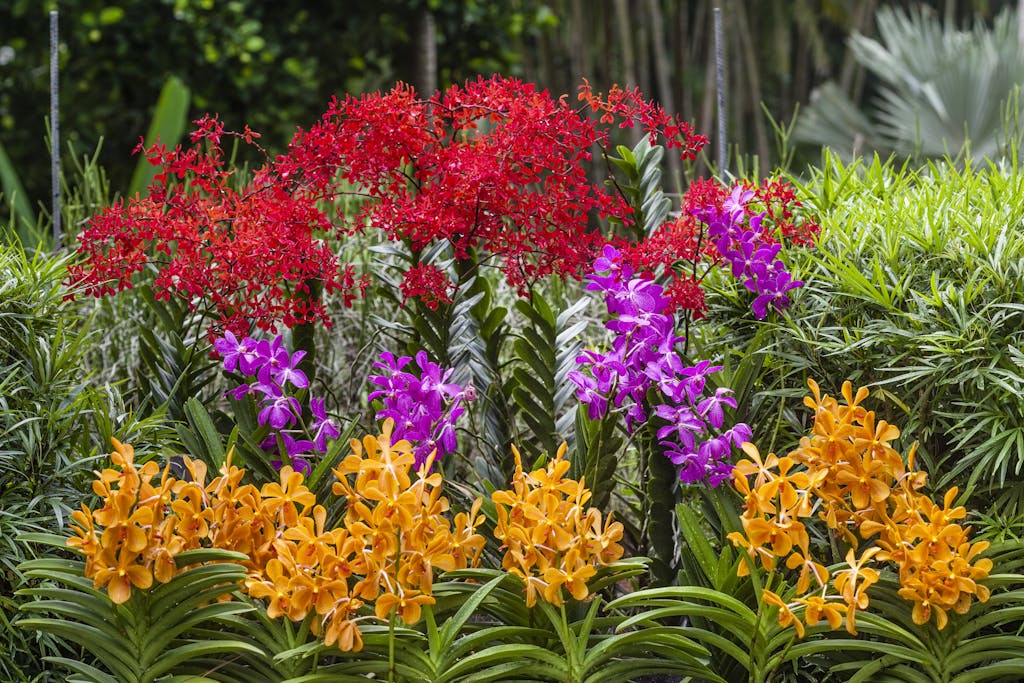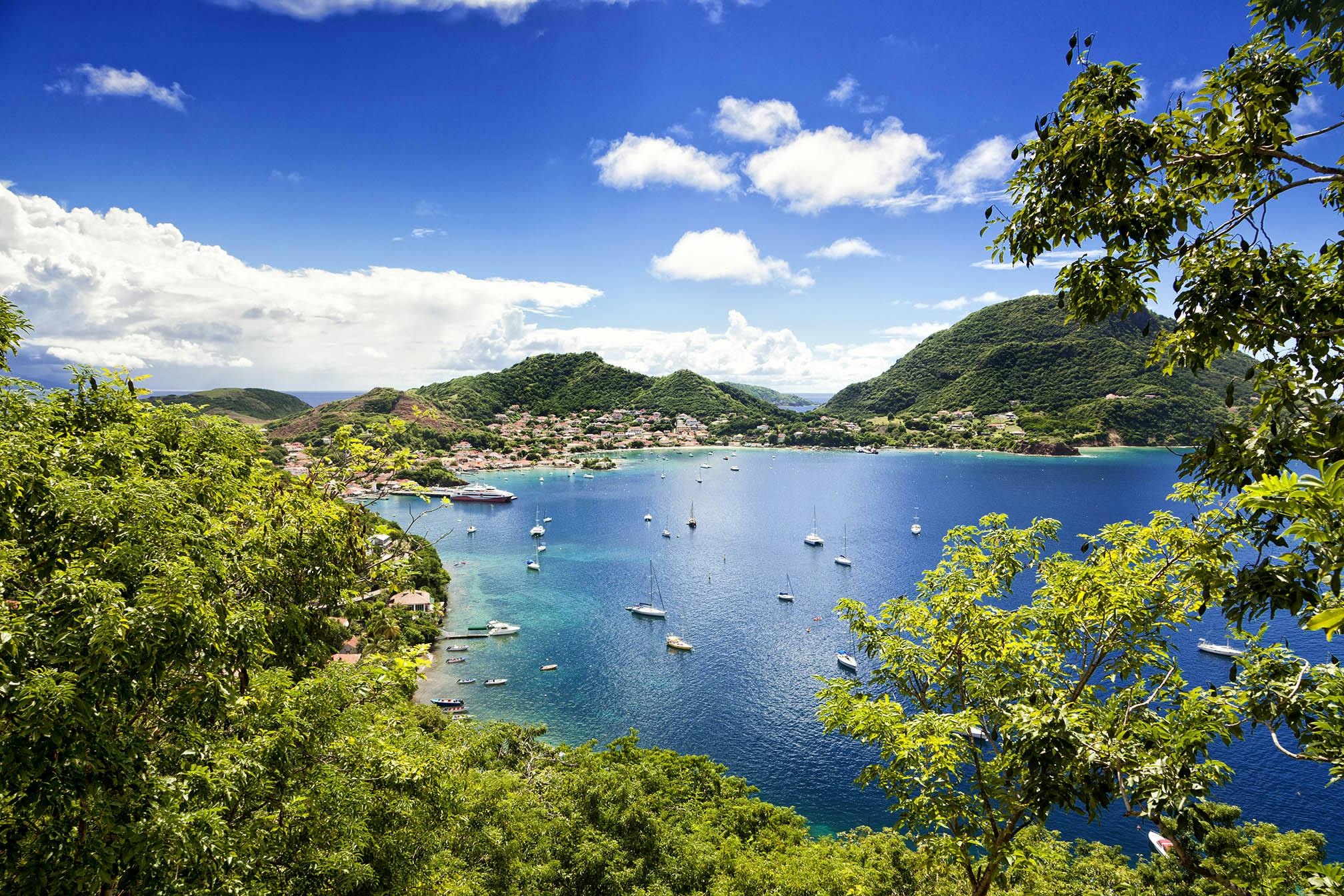Singapore’s Gardens Abloom with a Palette of Plants You Won’t Find Anywhere Else
It was 90 degrees in Singapore, and the air was thick with humidity. I stepped outside into the sunshine and breathed in the cool breeze off the South China Sea, a gentle wind touched with the scent of flowers.
Singapore calls itself the Garden City, and you would be hard pressed to imagine a destination more deserving of the nickname. The city has a history of botanical gardens that stretches back nearly 700 years, leading to a modern-day metropolis dotted with pockets of tropical forest and overflowing with tidily manicured parks.
As I strolled central Singapore, the heavenly sight and smell of blossoms surrounded me: raspberry- and orange-colored bougainvillea vines embracing a wrought-iron fence, palm trees swaying alongside a walkway, pots of flowers framing the entrances to boutiques and restaurants.
I immersed myself in the best of Singapore’s gardens on my visit here, walking to some, by car to others. Here’s a sampling of the Garden City’s finest.
Even the trees are super
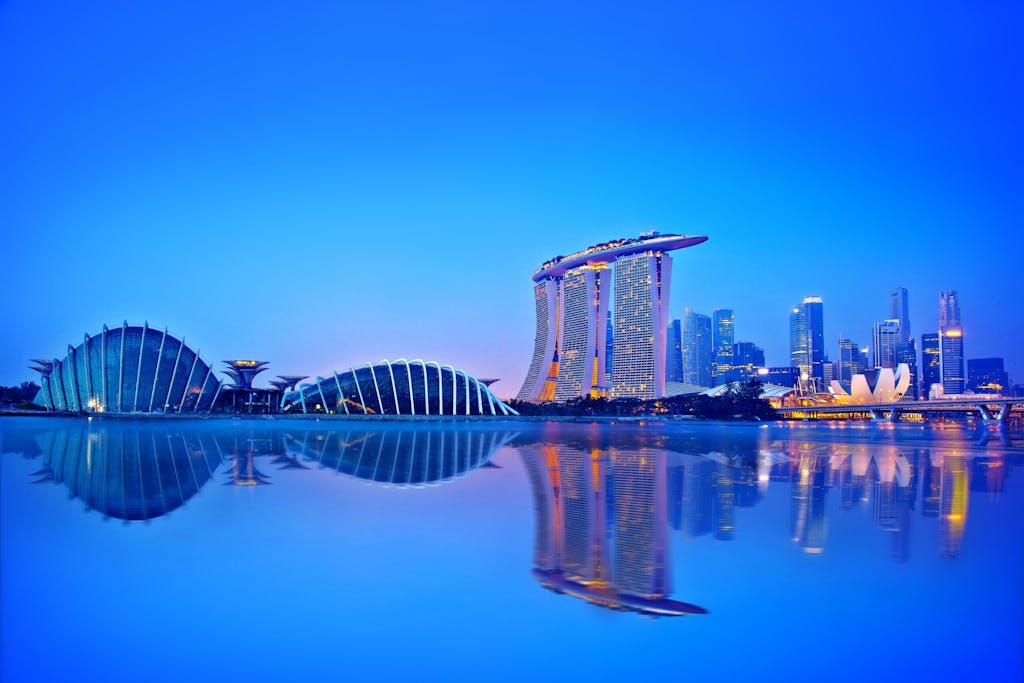
Gardens by the Bay: Singapore’s best-known garden attraction covers 250 acres on the shores of the Singapore Strait and offers so many botanical gems that it’s easy to spend an entire day here. The gardens’ most eye-catching feature: its 18 high-tech Supertrees, some reaching 16 stories. The Supertrees are built of metal and wire, but they function as gigantic trellises supporting vertical gardens of bromeliads, orchids and more than 160,000 other kinds of plants. They also harvest solar energy using rooftop panels.
The OCBC Skyway, which stretches 70 feet above ground between Supertrees, and the Supertree Observation Deck offer bird’s-eye views of the Gardens by the Bay, downtown Singapore and the port. After dark, the Supertrees form the centerpiece of a colorful sound and light show that includes recorded music, lasers and synchronized LED lights.
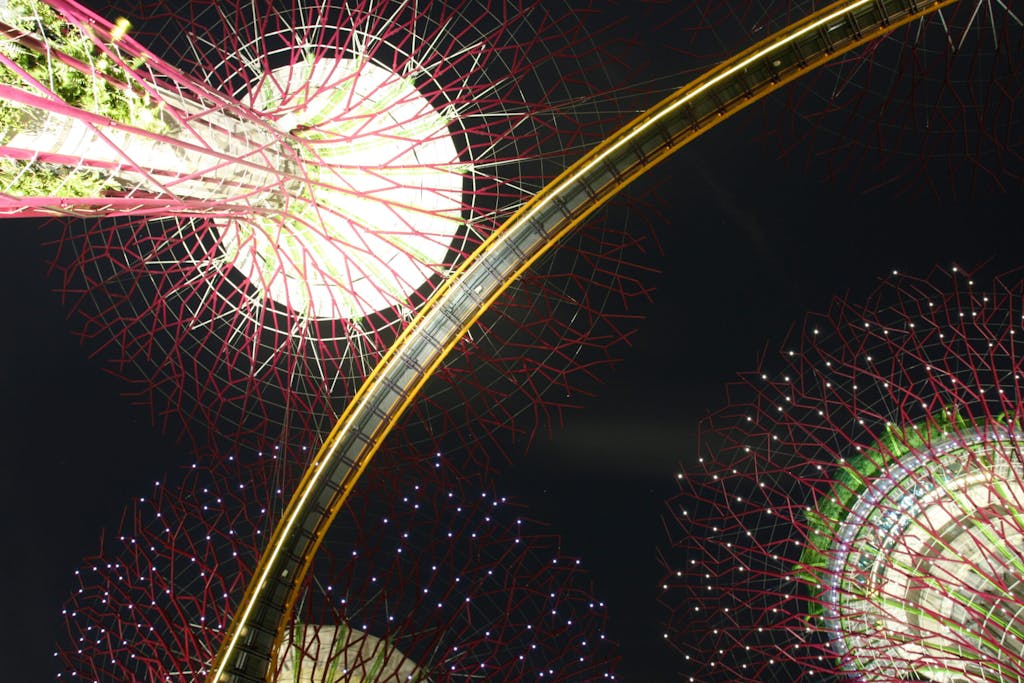
Supertrees aren’t the gardens’ sole attractions. I spent hours wandering through the Flower Dome and the Cloud Forest, two of the park’s greenhouse-style attractions. The buildings’ indoor streams, waterfalls and temperature control create indoor clouds, and themed plantings, as varied as delicate orchids, fuzzy cacti to seasonal arrangements of spring cherry blossoms and winter poinsettias.
On the UNESCO World Heritage List
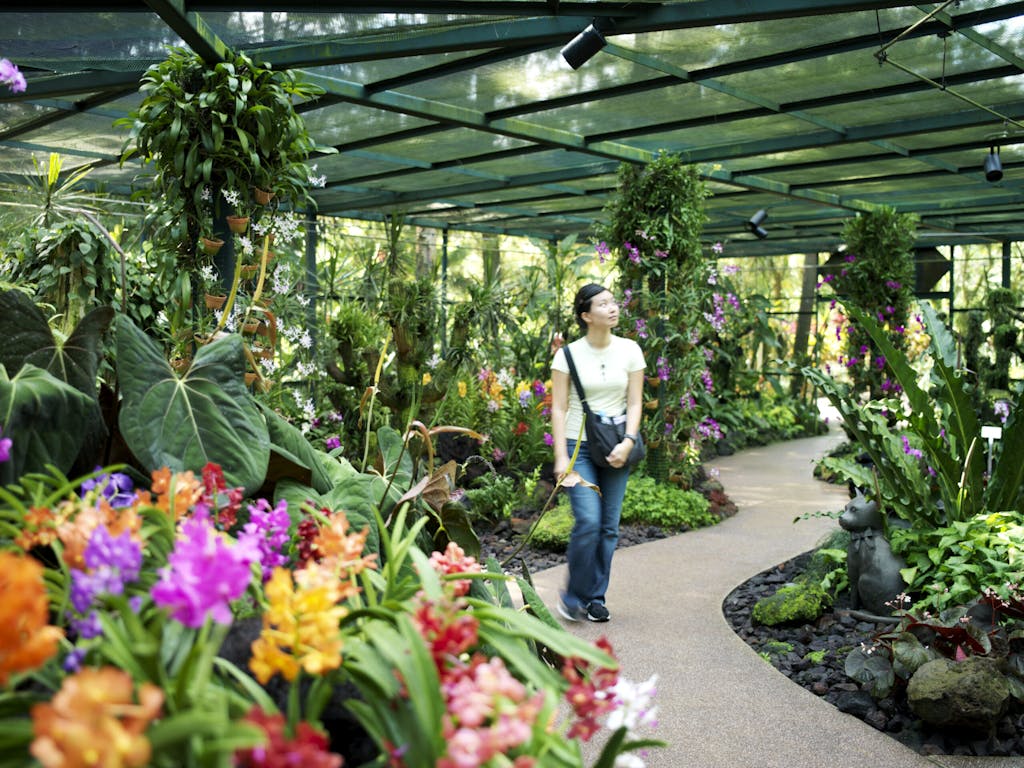
Singapore Botanic Gardens: The only tropical botanical gardens (above and above top) on the UNESCO World Heritage List trace their beginnings to Singapore and Sir Stamford Raffles, the colonial-era governor who founded modern Singapore as a shipping center. But the Briton also found fame in his lifetime as a result of his love of wilderness and cultivated gardens. His desire to collect, study and propagate tropical plants for export led eventually to the Singapore Botanic Gardens, begun in 1859 in northwestern Singapore.
The gardens’ 200-acre green space is crisscrossed by footpaths that meander beneath a dozen kinds of palm trees, past brilliant red lobster claw heliconias and alongside splashing waterfalls. The paths lead to themed gardens: the Ginger Garden, the Fragrant Garden and, most popular of all, Singapore’s National Orchid Garden, the world’s largest collection of orchids, offering more than 1,000 species and 2,000 hybrids of jaw-dropping blossoms.
On display are vibrant purple flowers as large as an adult hand, jewel-toned orchids on stalks that reach waist high, and masses of multicolored blossoms that tumble from overhead like wisteria.

Fort Canning Park. Sir Stamford’s first concentrated foray into tropical gardening and the roots of the Singapore Botanical Garden, began 3 miles away at the British Fort Canning. Set atop a hill a mile from the Singapore waterfront, Fort Canning’s lawns were where Sir Stamford first tilled Singapore’s soil, planting a spice garden and dabbling with ornamental flowers and trees.
By 1822, his efforts had morphed into the nation’s first true botanic garden, which moved to its current larger area in 1859.
Today, the remains of that first garden lie within Fort Canning Park. Nine individual historical gardens lie within the park, including Raffles’ spice garden and Sang Nila Utama Garden, a reimagining of the 14th-century Singaporean king’s palace gardens focusing on indigenous plants. Fort Canning Park also includes a rare Singaporean archaeological dig and the remains of the British fort, part of which has been converted into a historical museum.
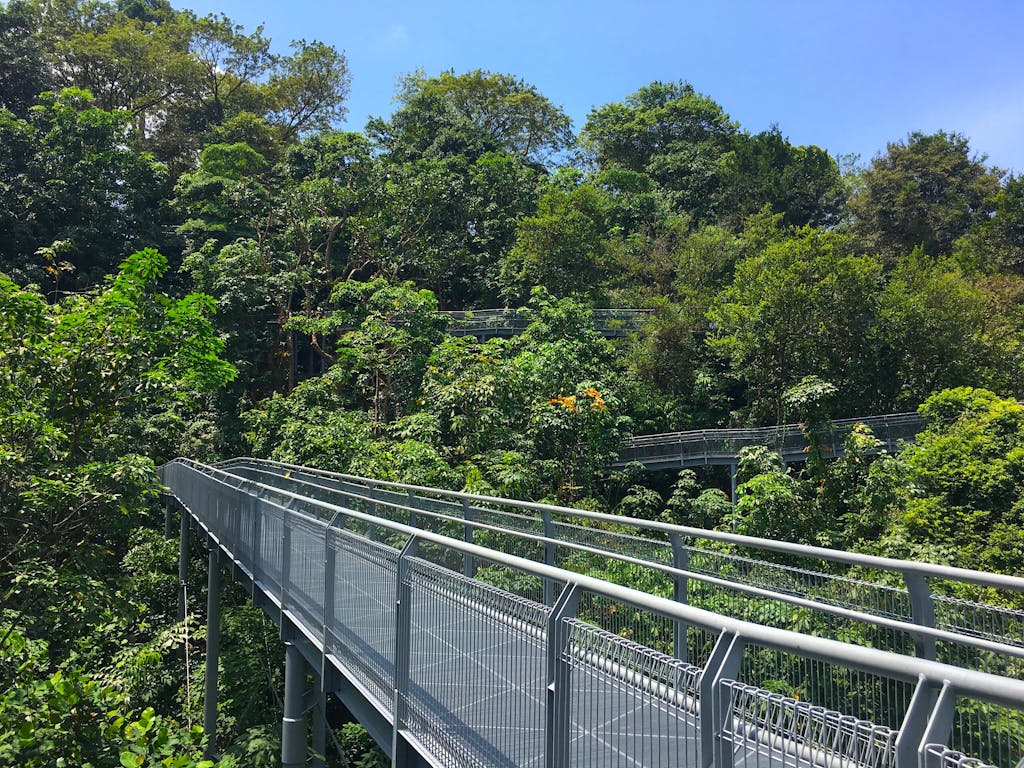
Southern Ridges: A series of hiking trails, observation decks and canopy walks – the Southern Ridges – connects four popular Singapore parks west of downtown Singapore. The Southern Ridges lead past small flower gardens, nature trails and ornamental trees and includes overlooks that allow views of Singapore and the Singapore Strait.
In total, the Southern Ridges measure 6 miles in length, but many visitors zero in the Henderson Waves, the trail’s most popular stretch containing a 900-foot-long pedestrian bridge within Telok Blangha Hill Park. The walkway is suspended 120 feet above ground and has an undulating, wave-like design nearly as attractive as the forest surrounding it. Nooks within the Henderson Waves provide opportunities to sit and soak up the views, observe tropical birds and take photographs.
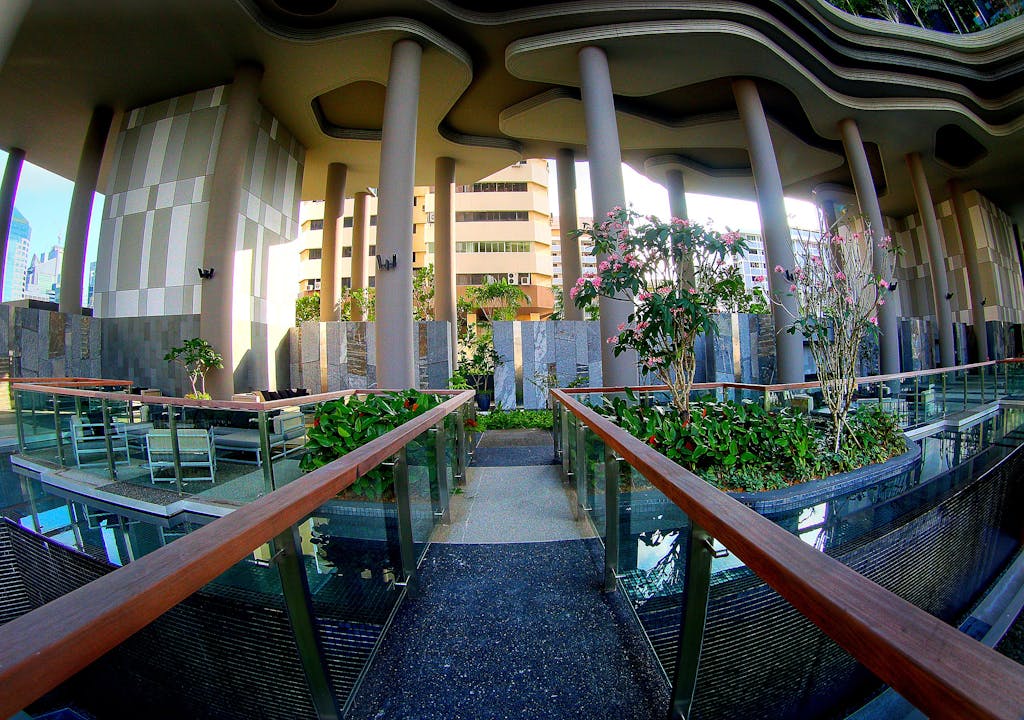
Garden hotels: Singapore’s hotels and restaurants have eagerly adopted the city’s nickname, incorporating gardens inside their properties and outdoors. The Parkroyal Collection ranks among the city’s greenest. Their hotel facades are cloaked with tropical trees and flowers to reduce their carbon footprint, to enrich their restaurant menus and to enhance their architectural beauty. The Parkroyal Collection on Pickering integrates an outdoor botanical garden and a multistory green space called the Skygardens that winds its way up the exterior of the building’s upper floors. A well-marked trail winds beneath palm trees, past bedded plants and alongside a swimming pool with seedpod-shaped cabanas. The Parkroyal Collection Marina Bay’s features an indoor botanical garden, indoor greenhouses and a rooftop urban farm, which supplies the hotel’s restaurant with more than 60 varieties of produce and herbs.



